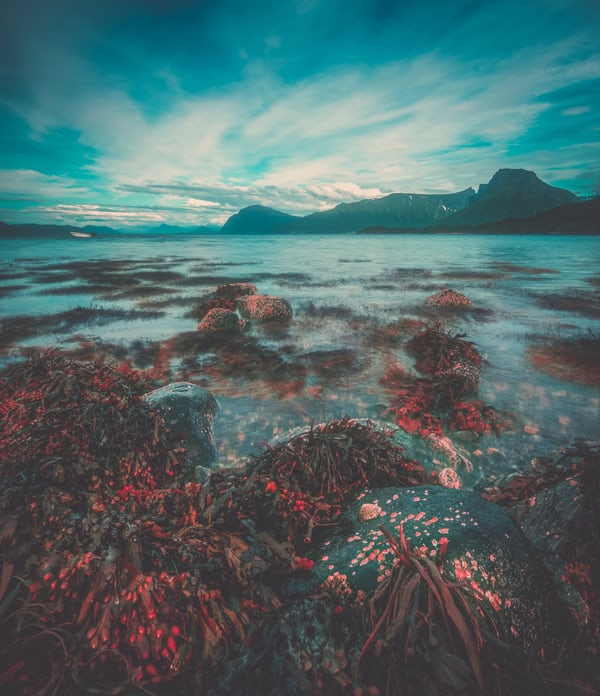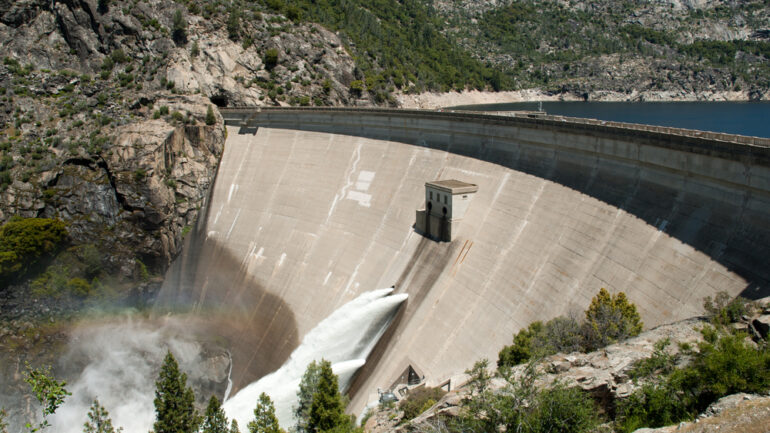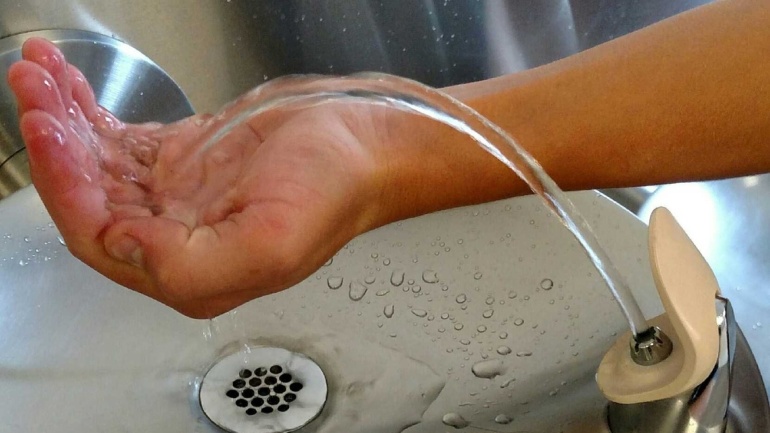By Rose Delaney, Staff Writer & Researcher for Save The Water™ | November 17, 2018
In recent months, Florida beachgoers have been left disheartened. The sunshine state’s once year-round, glistening shores are now subject to frequent occurrences of red tide.
What is Red Tide?
Red tide is not a new or radical phenomenon. In fact, this type of algae bloom has been detected in Florida’s waters since the 1840s. Although it is a natural event, it is very harmful to marine life and humans. Red tide not only produces deadly toxins that can kill fish, it also releases contaminants into the air that can cause respiratory problems in humans.1
Another way humans are exposed to red tide toxins is by eating contaminated shellfish. According to the National Institutes of Health (NIH), neurotoxic shellfish poisoning (NSP) is severely underreported to public health authorities. However, despite low levels of reporting, the NIH estimate that costs associated with the human health effects of marine toxin diseases account for at least 45% of the total estimated economic impact of algae bloom nationwide.2 This fact provides some insight into the economic effects of red tide.
Beach Closure, Loss of Marine Life, and Severe Respiratory Problems
In early October, red tide caused the closure of several Miami-Dade County beaches. Lab tests on samples taken from Haulover Park revealed a “medium concentration” of algae typically found in red tide. According to Larry Brand, algae expert at the University of Miami School of Marine and Atmospheric Science, although the levels of algae were relatively low, they were harmful enough to wipe out fish and trigger respiratory symptoms in residents.2
Basically, Larry Brand emphasized the unpredictable nature of red tide in his statement to the Weather Channel. “We can’t predict it very well and after things happen, we try to explain it.”3
Red tide outbreaks are not unique to Miami. The highest concentrations of red tide have, in fact, been found in Jupiter, Florida. Recently, the Florida Department of Health released a 48-hour health advisory when Jupiter beachgoers reported symptoms of “burning eyes and throats.” 3
What’s more, Florida marine life has significantly suffered as a result of algae bloom. In August, Governor Rick Scott declared a state of emergency due to red tide. The algae bloom resulted in the mass death of fish in Pinellas County beach waters. The ever-growing presence of red tide has also caused the loss of manatees, dolphins, and sea turtles in Monroe, Collier, Charlotte, Lee, Sarasota, and Manatee counties.3
Coastal Pollution: Worsening Algal Blooms
Although red tide has been recognized as a “natural occurrence” for centuries, many researchers like Larry Brand mentioned above are adamant in their belief that man-made pollution significantly worsens red tide. As Brand stated, “It’s a natural thing. You can go back 500 years. What I argue is that it’s much worse today and that’s the result of human-generated nutrients.”
However, not everyone is convinced. Vince Lovko, a phytoplankton ecologist at Mote Marine Lab, highlights the inconsistencies and gaps surrounding the linkage of pollution with red tide. Lokvo also emphasizes that this lack of knowledge is a direct consequence of the little effort that has been made by the state to further research on practices such as water quality monitoring. 4
More research funding would help scientists understand “red tide dynamics.” As Bob Weisberg, an advocate for enhanced red tide research and oceanographer at the University of South Florida, emphasizes, “We’ve never been able to get the state of Florida to commit, and it’s further hampering our ability to predict red tide.”4
According to these water experts, it is high time the state of Florida expanded its research capacities to discover what causes outbreaks of harmful algae blooms. It is also time to change the practice of tracking red tides only once they have arrived on Florida’s shores.4
Red Tide Research Acceleration: Effective Action
Fortunately, all hope is not lost. The Florida Fish and Wildlife Research Institute (FWRI) is taking action. The FWRI have implemented initiatives to better detect, monitor, track, and predict incoming red tides. At the state level, the FWRI engages in monitoring and sampling programs and provides frequent updates on their website.5
Another organization that offers oversight of red-tide-related activities is the Florida Harmful Algal Bloom Task Force. The Task Force, established in 1999, primarily focuses on reviewing the status and accuracy of information for monitoring economic and public health factors affecting harmful algal blooms in Florida. The Task Force also implements research and monitors priorities related to detection, prediction, mitigation, and control. They also develop recommendations for state and local governments and the Florida Marine Research Institute.5
Luckily, the efforts of Florida’s many water enthusiasts cannot go unnoticed, especially with the help of fervent activists and politicians across the state.5 In fact, in March 2018, S. Rep. Vern Buchanan, R-Fla, successfully pushed an amendment through Congress that sent $8 million to the NOAA’s National Ocean Service “to detect, respond to and develop new and innovative technologies to mitigate the impacts of red tide.”6 In addition, Governor Rick Scott announced that the Florida Department of Environmental Protection (DEP) will provide an additional $3 million in grant funding to aid communities impacted by red tide.7
As Floridians begin to link the possible effects of coastal pollution with increasing algal blooms, academics, researchers, and beachgoers alike will continue to strive for enhanced red tide outbreak research, a comprehensive management strategy, and a dramatic reduction in coastal pollution along Florida’s coast.
Dealing with Red Tide: What Can You Do?
- Nutrient pollution and warming waters caused by climate change have been reported to fuel algal blooms, increasing their size and prolonging their duration. Therefore, it is vital that we tackle all sources of pollution and advocate for clean water at the beach.
- Contact your local member of Congress to advocate for “The Harmful Algal Bloom and Hypoxia Research and Control Amendments Act of 2017” (S.1057) and have the legislation passed in the House of Representatives.
- Contact your State Senator or Representative and request that they fund the “Florida Healthy Beaches Program” which will test recreational beaches for bacterial indicators of impaired water.
- Consider donating to Save the Water™ so that issues like red tide are researched and not hidden from the public eye.
References
- Tyler Treadway. October 1, 2018. “What is Red Tide? Algae bloom on Treasure Coast Beaches came from Fort Myers, Gulf Coast.” TC Palm. https://www.tcpalm.com/story/news/local/indian-river-lagoon/health/2018/10/01/red-tide-heres-what-you-need-know/1487742002/
- Barbara Kirkpatrick et al. October 1, 2006. “Environmental Exposures to Florida Red Tides: Effects on Emergency Room Respiratory diagnoses admissions.” Harmful Algae, 5(5).https://www.ncbi.nlm.nih.gov/pmc/articles/PMC2847280/
- Ron Brackett. October 1, 2018. “Red Tide Found in Miami-Dade; Some Atlantic Coast Beaches Closed.” The Weather Channel. https://weather.com/news/news/2018-10-01-florida-atlantic-beaches-red-tide-testing/
- Jenny Staletovich. August 30, 2018. “Red Tide May Be ‘Natural,’ but Scientists Believe Coastal Pollution is Making it Worse.” Miami Herald. https://www.miamiherald.com/news/local/environment/article216894990.html
- Frank Alcock. August 2007. “An Assessment of Florida Red Tide: Causes, Consequences and Management Strategies.” Marine Policy Institute at Mote Marine Laboratory. http://mote.org/clientuploads/Documents/MPI/Final_MPI_RedTide_no_embargo_bar.pdf
- Kevin Derby. July 5, 2018. “Vern Buchanan Continues Fight Against Red Tide.” Sunshine State News. http://sunshinestatenews.com/story/vern-buchanan-continues-fight-against-red-tide
- Rick Scott. August 21, 2018. “Gov. Scott Announces Additional 3 Million to Help Counties Impacted by Red Tide.” Rick Scott, 45th Governor of Florida. https://www.flgov.com/2018/08/22/gov-scott-announces-additional-3-million-to-help-counties-impacted-by-red-tide/
- Holly Parker and Mara Dias. October 16, 2018. “Take Action on Harmful Algal Blooms and Toxic Red Tides in Florida.” Surfrider Foundation. https://www.surfrider.org/coastal-blog/entry/take-action-on-harmful-algal-blooms-toxic-red-tides-in-florida





